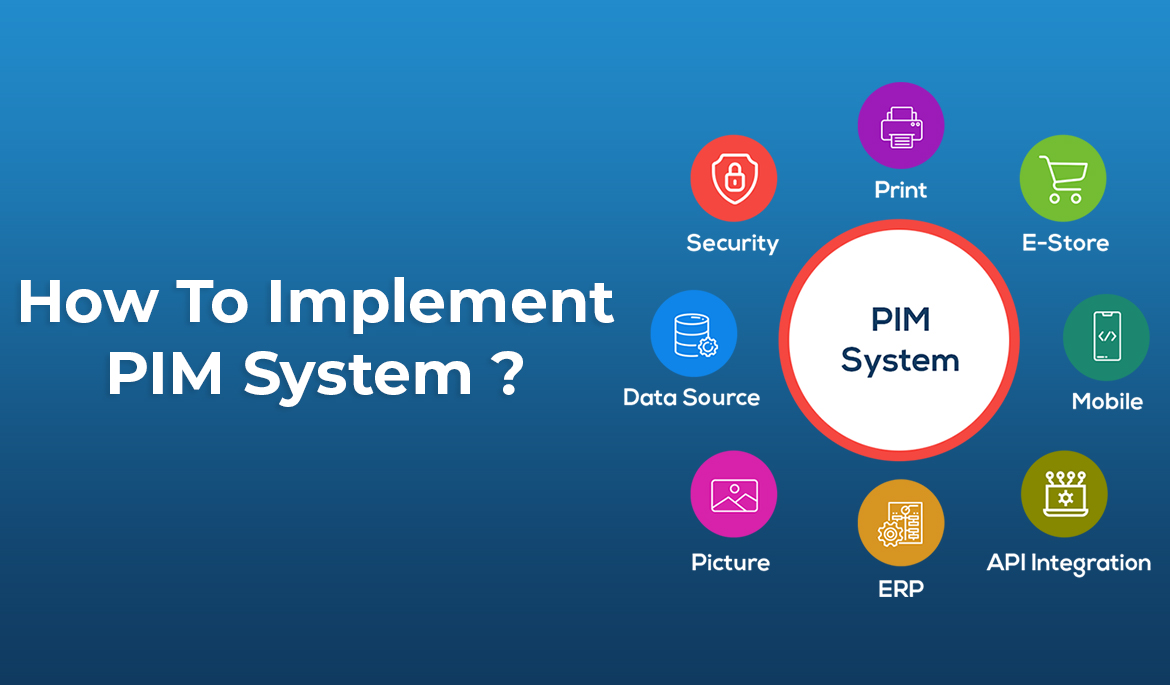Product Information Management (PIM) system has emerged as a must-have for all mid-size and large-size organizations aspiring to optimize their digital commerce operations and improve customer experience.
The adoption of PIM in digital businesses has grown more due to Gen AI and data analytics across the e-commerce sector. In the age of reviews, real-time feedback, and social media, streamlined product information can make all the difference. Enterprises must present product information in a way that’s complete, accurate, consistent, and easy to digest. An effective PIM solution is sure to augment the brand presence, increase customer loyalty, boost overall collaboration, and drive revenue. A little discipline in implementing a PIM system can break down informational barriers within an enterprise and provide greater agility in all sorts of integrations.
Know- What is PIM (Product Information Management), its benefits, and the best PIM software for eCommerce?
Some of the best practices you must adopt to ensure your PIM Implementation initiative yields optimal results include:
Analyze your business case and product data complexity
Although a PIM system is super-critical for enterprises, it can neither be implemented overnight nor can the enterprise benefit from it suddenly; a lengthy overhaul of the entire process is required. To begin with, you should try to understand how a PIM solution can help you attain business objectives and deliver value quickly.
Though product information is more than product IDs and descriptions, organizing it could be a big challenge for your product team. Therefore, start head-on and address those, and when categorized right, product information lends the entire product story at a glance. This was one of the many use cases where resolving immediate needs with strategic thinking can have a long-term benefit. Hence, before you initiate this phased endeavor, gather requirements from teams, map them against business goals, and, thereby, use your judgment to define your course of action.
Define and document your PIM Use Case
While pitching for an advanced PIM solution, emphasize how your business can gain agility and meet compliance needs when unified product information is available for utilization across various functions, such as marketing, sales, operations, and legal department.
You need to identify existing gaps in your operations and establish how a PIM can yield the desired business results. You must identify use cases depending on your business objectives and evolving product data requirements. Further, answering these questions will help you devise an effective PIM strategy:
- How critical is your PIM initiative to expedite your time-to-market?
- What are the new channels of expansion you are exploring? Which are the more important ones?
- Are you scaling the business to cater to new geographies? If yes, is one geography more critical than the other?
Moreover, for a PIM initiative to be successful, you have to have reliable technological drivers. Build a robust system that pulls and stores data from various business functions. The availability of organized data can go a long way in reducing costs and increase revenue. This might be a good starting point to devise Master Data Management (MDM) in case you don’t have one already.
Decide the PIM Vendor
A PIM strategy differs from industry to industry. Be it data model standards, taxonomies, schemas or data analytics, implementation process, and need for performance and scalability, every business workflow depends on its respective industry vertical. For example, while the reliance on performance might be crucial for a retail organization, the sacredness of product recipes is the core of a food-tech company.
Similarly, there is no one best approach when it comes to deciding whether you should buy or build your PIM system. Your business needs can be a good deciding factor whether you want to buy a PIM software or build in-house. Consulting your IT department can educate you about the pros and cons of both pertinent to your business in terms of cost, adaptability, and usability. In fact, you should keep your IT team in the loop because a PIM system is a part of the more extensive information infrastructure that supports the entire organization. In both cases, the technology deployed to support PIM must be aligned with the broader reference architecture for information management.
As mentioned earlier, implementing a PIM system is a long process. Therefore, build a team that will see through the entire PIM initiative. Besides onboarding IT personnel, ensure the inclusion of a management-level executive in the team. An ideal Pimcore implementation partners should also have members from marketing, sales, product, IT, and legal departments.
Customize, Deploy, and Integrate
A PIM system also simplifies your business intelligence (BI) strategy. When your data sources are clean, you can focus on developing an existing governance framework to yield actionable insights.
Here are a couple of tips to help you execute the task:
- Establish strong data governance at the onset
- Use data quality technology right at the start to ensure that you have a single view of the master data
- Think long term; understand architectural structures of different MDMs and choose one that aligns with your PIM initiatives and vice versa. This will ease the process of integration
Pilot Test and Scale
Be pragmatic in your approach, plan the journey in phases, and ensure value delivery at each stage other than meeting the organization’s long-term vision. Explain different aspects of the initiative in business terms to all stakeholders to onboard their help. However, any upgrade is only useful when it is adopted. Therefore, train your team to embrace the change. Adopt a change management initiative to see through the functional and technical training of your team. Plan an incremental implementation strategy to demonstrate how PIM integrates seamlessly into your existing processes and results in overall benefits across the organization. Achieving internal adoption is critical for the success of a PIM implementation. Ensure that your team gets all the support required throughout the process so that it results in the realization of business benefits.
Also Read:- Benefits Of Implementing A Product Information Management Solution In Your Business
It is imperative that every team member – from the coders to sales reps – have a clear and unified understanding of PIM Software implementation’s objectives. Adopt an ROI-driven PIM strategy to capture your output and identify success metrics. Measurable outcomes such as less email exchange, the lesser workload for data managers, and faster introduction of new products to the market can win over stakeholders to commit to this initiative.
They must drive more values from product information management initiatives to succeed in delivering unified retail commerce experiences for customers.
Download a FREE copy of eBooks:


